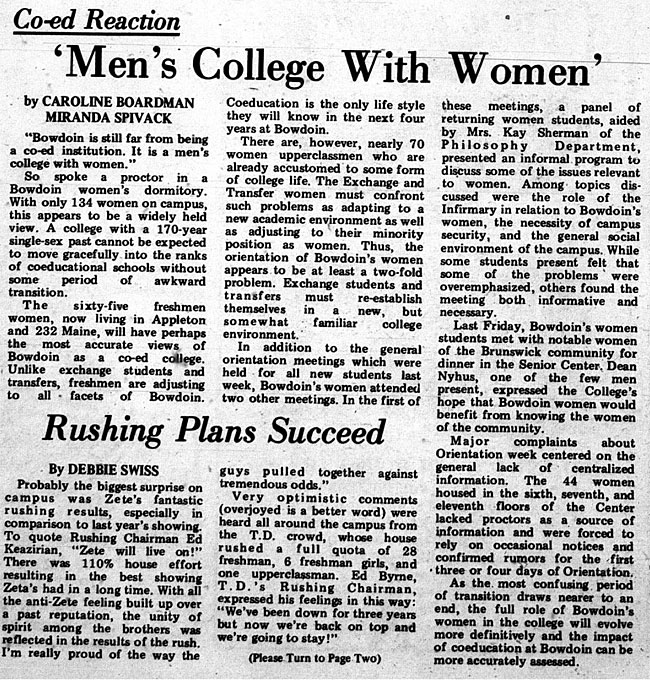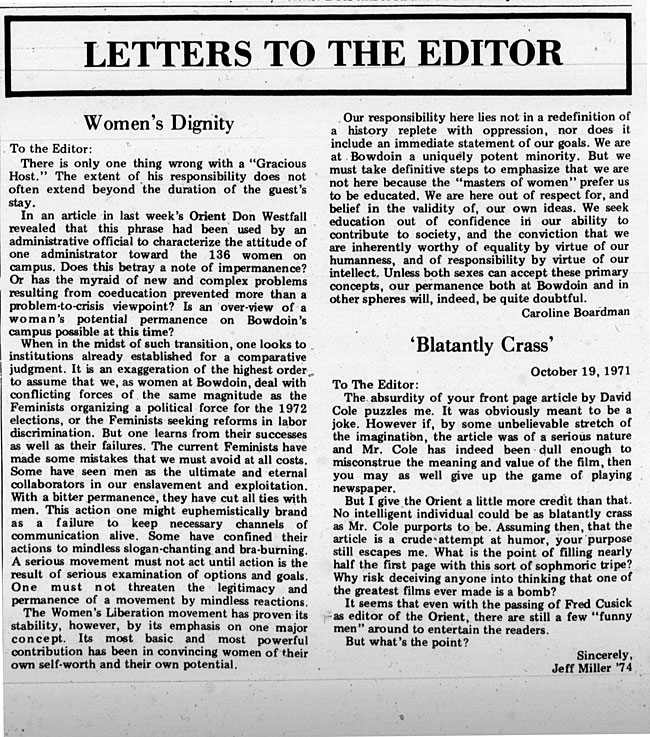The Newly Coeducational Bowdoin: A ‘Men’s College With Women?’
In the fall of 1971, 134 women arrived at Bowdoin as first year, transfer, and exchange students. This series of three documents explores the very early experiences of women at the newly coeducational Bowdoin. The September 17, 1971 article, “‘Men’s College with Women’” (Document EN, 23.1) from the college newspaper, the Orient, outlines some of the first problems that women faced. It expresses the sentiment that having such a small number of women does not make the College coed, but rather “a men’s college with women.” The article describes some of the earliest concerns of women at Bowdoin, and it recognizes the different experiences and adjustments of first years compared to transfer and exchange students, noting that the transfer and exchange students are already “accustomed to some form of college life,” but nevertheless “must confront such problems as adapting to a new academic environment as well as adjusting to their minority position as women.”
A second Orient article, “Bowdoin: ‘The Gracious Host’” (Document EN, 23.2) from October 8, 1971, and the accompanying letter to the editor from Caroline Boardman (Document EN, 23.3) from October 22, 1971, also reflect a concern that women did not occupy a secure space at Bowdoin. Boardman wonders whether an administrator’s use of the term “gracious host” to describe Bowdoin’s relationship to women “[betrays] a note of impermanence.” These concerns about the impermanence of women and especially the lack of preparation for women’s arrival at a newly coeducational institution are not unwarranted. With only a one to six ratio of women to men in the 1971-72 school year, and the goal of reaching a one to three or two to three ratio after four years (Pierce Report, 39), it is understandable that some women did not see themselves as claiming full citizenship at the College.
Such issues with the introduction of women into a previously all-male institution were not unique to Bowdoin. In Going Coed, Susan Poulson and Leslie Miller-Bernal remark that college administrations often had little idea as to what changes should be made to make women feel “welcome in the classroom and on campus” (312). They point out that colleges generally did not “prepare the campus culture for women,” instead expecting women to be able to fit right in without shifts in the “status quo” (312). These Orient articles suggest that the same may have been true at Bowdoin.


